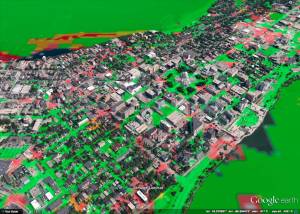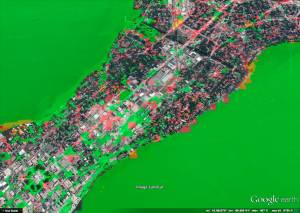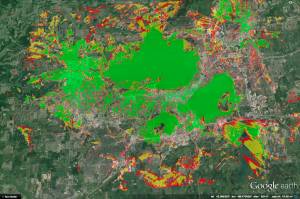Table of Contents
Drones
With technology upgrades, uses for drones are being researched on a daily basis. At the University of Wisconsin-Madison, in particular, the WiNGS lab group, has been looking at utilizing the quick response times of drones in emergency situations to provide information to the emergency responders.
Initial Drone Work
Initial work to test the fiesibility of working with wireless data connectivity technology, in this case WiMAX, the group worked to provide live streaming video from a drone in flight.
Here is a YouTube video of our live demo at the Global Environment for Network Innovation (GENI) Engineering Conference.
Current Work
We are in the process of expanding the WiMAX coverage around the greater Madison area. Initial propagation models have been created by Tony Kapella and a colleague of his to show the minimum signal strengths in and around the city.
Propagation Models
Estimated coverage plot of WiNEST in conjunction with the 5NINES 5M network in the downtown Madison area. Speeds of 30 to 15 mbits should be possible in the green areas, orange should be approximately 14 to 8 Mbits/s, and red areas will likely provide approximately 7 to 1 Mbits/s.
The predictions include ground clutter data, building height extrusions, and other hacks to get the urban environment loss 'right.' Predicted downlink receive levels assume a 0 dB gain CPE antenna, 2500 mhz frequency, non-mobile, and +55 dBmw EIRP at the cell site. This is what one could call a “conservative” estimate of coverage (no mimo recovery, stc/ctc, or other gain is assumed).
Color scale, units in dBmw:
- -85 or better, green
- -90 to -86, orange
- -95 to -91, red
- <= -96, no color
Propataion model for around the capitol:



